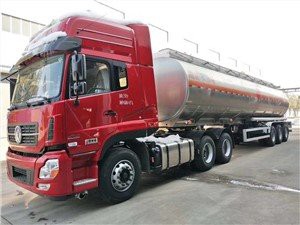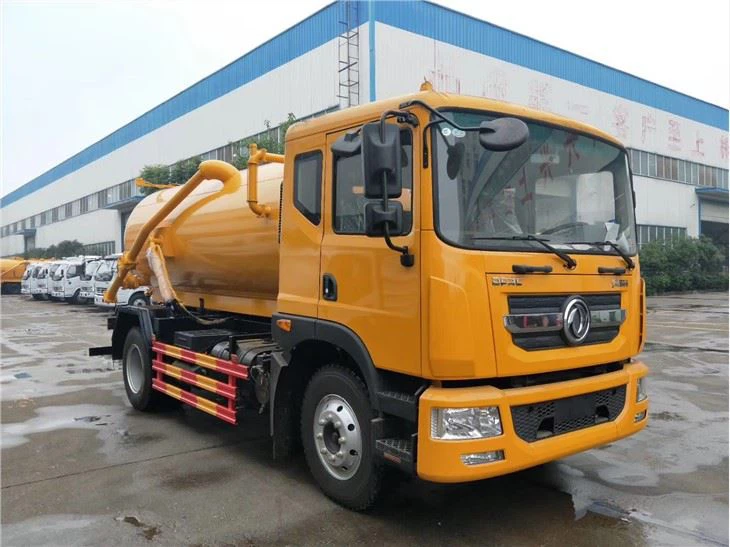Dumper Truck Weight Capacity: A Comprehensive Guide

When it comes to construction and heavy-duty work, dumper trucks are indispensable. Understanding the weight capacity of these trucks is crucial to ensure safety, efficiency, and compliance with regulations. This article dives deep into the various aspects of dumper truck weight capacity, providing practical insights, examples, and tips for optimal use.
Understanding Dumper Trucks
What is a Dumper Truck?
A dumper truck, also known as a dump truck, is a heavy vehicle designed to transport loose materials such as sand, gravel, and demolition waste. They come equipped with an open-box bed and a hydraulic lift system that allows the truck to unload its cargo easily by tilting the bed.
Types of Dumper Trucks
There are several types of dumper trucks, each designed for specific applications and weight capacities:
- Standard Dump Trucks: Commonly used on construction sites for basic hauling.
- Articulated Dump Trucks: Best for uneven terrain and rough landscapes due to their flexible hinge.
- Transfer Dump Trucks: Feature a separate trailer for additional hauling capacity.
- Super Dump Trucks: Capable of carrying heavier loads thanks to additional axles.
Factors Influencing Dumper Truck Weight Capacity
Gross Vehicle Weight Rating (GVWR)
The GVWR is the maximum weight a vehicle can safely carry, including the truck’s weight, cargo, passengers, and fuel. Understanding GVWR is crucial for optimal load management.
Payload Capacity
Payload capacity refers to the maximum weight of cargo that a dumper truck can carry without exceeding its GVWR. It varies significantly between truck models and types.
Truck Configuration

The configuration of a dumper truck, including the number of axles and suspension type, greatly impacts its weight capacity. More axles often mean higher weight capacity.
Material Type and Weight
Different materials have different weights. For instance, sand is heavier than dirt. Understanding the type of material being transported is vital in calculating the payload correctly.
Weight Capacity Ranges by Dumper Truck Type
Standard Dump Truck Weight Capacity
| Truck Model | Weight Capacity (lbs) |
|---|---|
| Small Standard Dump | 6,000 – 12,000 |
| Medium Standard Dump | 12,000 – 20,000 |
| Large Standard Dump | 20,000 – 30,000 |
Articulated Dump Truck Weight Capacity
| Model | Weight Capacity (lbs) |
|---|---|
| Small Articulated | 20,000 – 30,000 |
| Medium Articulated | 30,000 – 40,000 |
| Heavy Articulated | 40,000 – 50,000 |

Transfer Dump Truck Weight Capacity
Transfer dump trucks typically carry about 40,000 – 60,000 lbs, depending on the specific model and configuration. The ability to transfer additional loads makes them versatile for larger projects.
Super Dump Truck Weight Capacity
Super dump trucks can carry up to 80,000 lbs or more. Their extra axles allow for a greater payload capacity, making them ideal for hefty materials like asphalt and aggregates.
Calculating Weight Capacity
Steps to Calculate Weight Capacity
- Know Your GVWR: Check the manufacturer’s specifications.
- Determine Truck Weight: Weigh the truck when it’s empty.
- Calculate Payload: Subtract the truck weight from the GVWR.
- Consider Material Weight: Use a material weight chart for accurate calculations.
Example of Weight Capacity Calculation
Suppose a dump truck has a GVWR of 36,000 lbs and weighs 12,000 lbs when empty.
- GVWR: 36,000 lbs
- Empty Truck Weight: 12,000 lbs
- Payload Capacity: 36,000 – 12,000 = 24,000 lbs
This example demonstrates how to accurately assess the weight capacity of a dumper truck.
Best Practices for Load Management
Load Distribution
Ensure that the load is evenly distributed across the truck bed to maintain stability. Uneven loads can lead to accidents and vehicle tipping.
Regular Maintenance and Check-ups
Conduct regular maintenance checks to ensure all truck components are in good working order. This helps maintain safety and prolongs the life of the vehicle.
Weight Monitoring Tools
Invest in weight monitoring systems for more accurate load assessments. Tools like onboard scales can help in maintaining compliance with weight limits.
Training Operators
Provide thorough training for operators to understand weight limits and proper loading techniques. Safety should always be a priority.
Legal Regulations and Compliance
Understanding Overloading Regulations

Every state has specific regulations regarding maximum load limits. Failing to adhere to these can result in fines, increased insurance rates, and safety violations.
Permits and Licensing
Check if special permits are required for hauling heavier loads. Operators must also ensure they have the necessary licenses to operate heavy-duty vehicles.
Common Questions About Dumper Truck Weight Capacity
What is the maximum weight a standard dump truck can carry?
Generally, a standard dump truck can carry between 6,000 and 30,000 lbs, depending on its size and configuration.
How can I calculate the correct weight load for my dumper truck?
Calculate the payload capacity by subtracting the weight of the empty truck from its GVWR. Always consider the weight of the materials you plan to transport.
What are the consequences of overloading a dump truck?
Overloading can lead to vehicle damage, reduced fuel efficiency, safety hazards, and potential legal penalties.
What is a good weight monitoring tool for dumper trucks?
Onboard scales are recommended for accurate weight monitoring. These systems help ensure loads are within legal limits.
What are the legal requirements for dumper truck weight limits?
Legal weight limits vary by state or country. It’s essential to check local regulations to avoid fines and comply with safety standards.
How often should dumper trucks undergo maintenance to ensure weight capacity is safe?
Dumper trucks should be inspected regularly, typically every 6 months, or after significant loads to ensure everything is functioning properly and safely.
